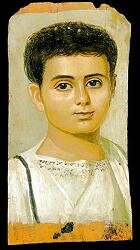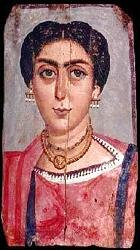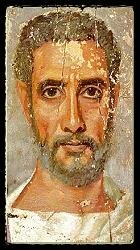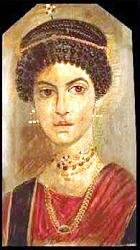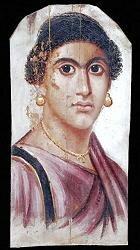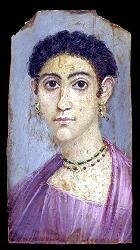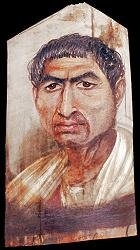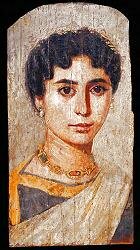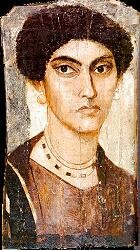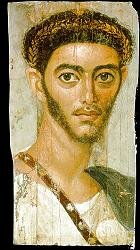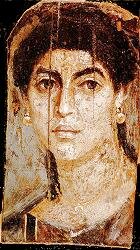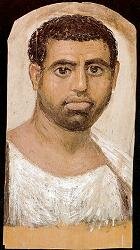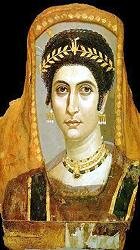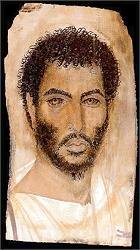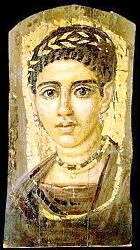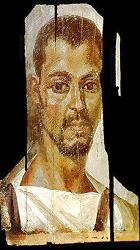|
|
||||||||||||||||||||||||||||||||
|
|
fayoum mummy portraits During the first to third century AD in Egypt, painted panel portraits, more commonly referred to as the Fayoum portraits (also written Fayum) were sometimes placed over the heads of mummies. The "Fayoum Portraits" are remarkably life-like paintings of the deceased that were once bandaged in place over the face of the mummy. These portraits were, in many cases, finely executed in encaustic paint on wood or occasionally on stuccoed linen. With their direct full gaze and strong presence, they bring the inhabitants of Greco-Roman ancient Egypt before us with compelling intimacy.
They were initially unearthed from cemeteries in the Fayoum and first archaeologically excavated in 1888 and between 1910 and 1911 by Flinders Petrie at Hawara. Since then, they have been discovered at sites throughout Egypt from the northern coast to Aswan in the south. These were paintings made with encaustic (coloured beeswax) or tempera (watercolour) on wooden panels or linen shrouds and were rendered in a Hellenistic style not unlike contemporary frescoes discovered at Pompeii and Herculaneum in Italy. Nevertheless, it is believed that such two-dimensional paintings held the same ideological function as traditional three-dimensional masks. The portraits were popular among nineteenth and early twentieth century collectors, and this had a tendency to isolate them from their funerary contexts. They were studied by classicists and art historians who, basing their conclusions on details in the paintings such as hairstyles, jewellery and costume, identified the portraits as being those of Greek or Roman settlers who had adopted Egyptian burial customs. In fact successful attempts have been made, based on the analysis of brush strokes and tool marks and the distinctive rendering of anatomical features, to group these portraits according to schools and to identify some individual artistic hands.
There may well have been another use for these paintings. The fact at least one portrait (now in the British Museum) was discovered at Hawara still within a wooden frame, indicates that the paintings may have had a domestic use prior to inclusion within the funerary equipment. They may have been hung in the owners home prior to such use. Together with the surviving frescoes and objects from Pompeii and Herculaneum, and tomb frescoes in Macedonia, these portraits are amongst the best preserved paintings from ancient times. They are remarkably naturalistic and it is believed that they were painted during the subject's lifetime. It is, however, debatable whether the portraits depict the subjects as they really were. Analyses have shown that the painters depicted faces in a repetitive and formulaic way, albeit with a variety of hairstyles and beards. They appear to have worked from a number of standard types without making detailed observations of the unique facial proportions of specific individuals which give each face its own personality.
|
|||||||||||||||||||||||||||||||
|
||||||||||||||||||||||||||||||||

